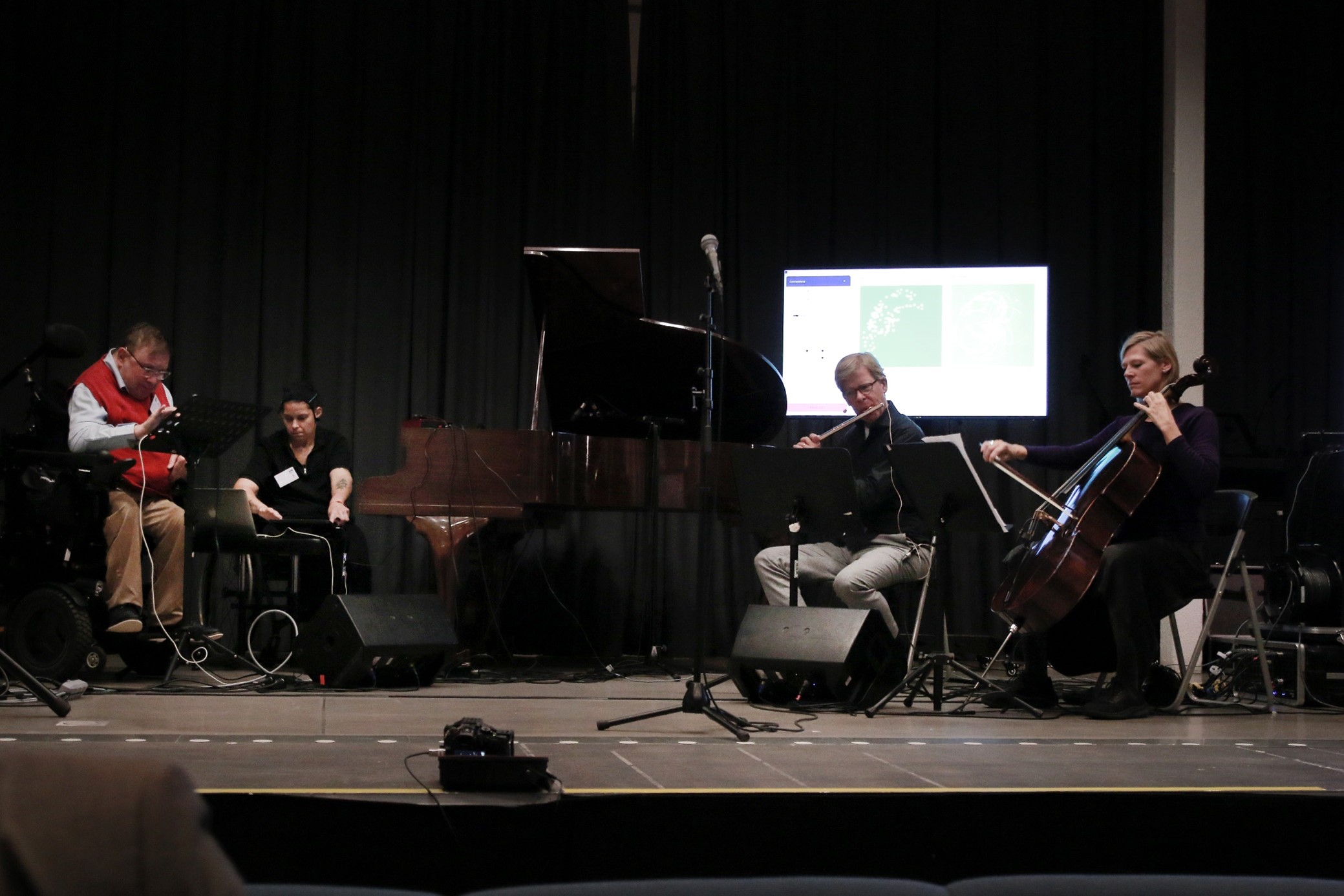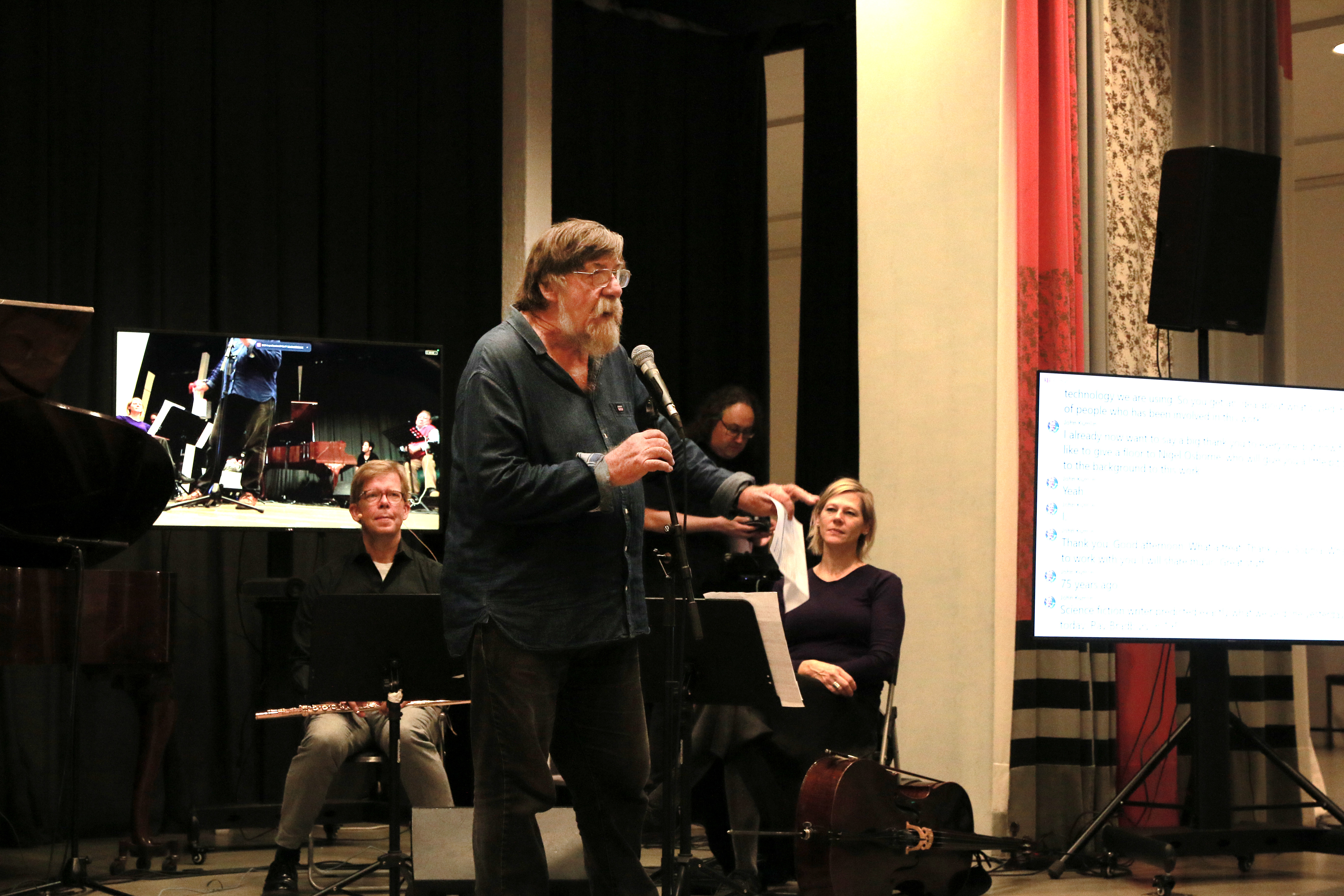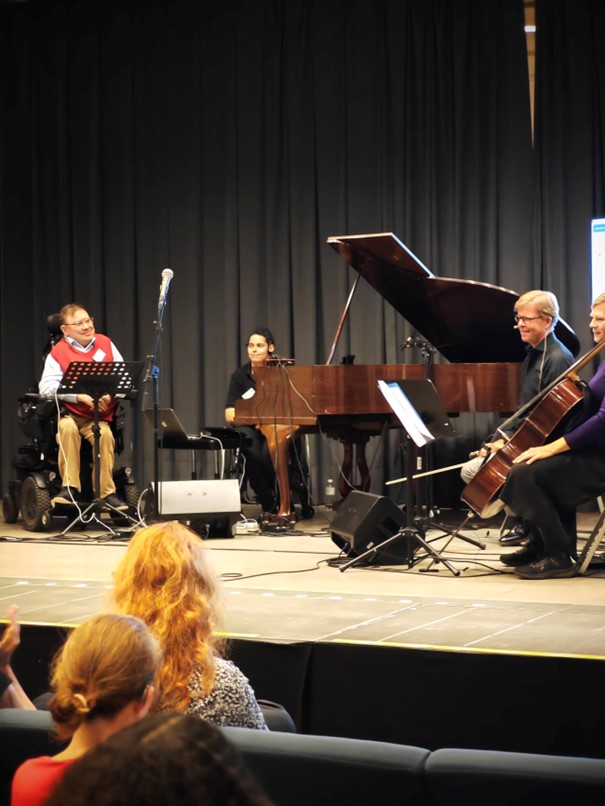
The MuseIT project is coming to an end, and in September its final event took place in Borås and Gothenburg. For nearly three years, the project has developed new methods and tools to make culture more accessible, inclusive, and multisensory. The final event offered the audience a unique opportunity to experience the results firsthand.
A central part of the project has been to explore multimodality – how different senses can interact to create richer and more accessible cultural experiences. Through multisensory representations of artworks or music, culture can be experienced not only with sight and hearing but also through touch and other senses. In this way, MuseIT has also contributed to new ways of preserving and communicating cultural heritage in inclusive formats.
ShareMusic’s role in the project has focused on cultural co-creation. We have worked on developing the Remote Performance Platform, enabling collaborative music-making across distance. We have also contributed to other parts of the project, including the creation of an accessible archive of cultural assets. Find our Knowledge Bank here.

Professor Nigel Osborne, chair of ShareMusic’s Academic Council and a key figure in the project, put it this way:
“Through MuseIT, we have been able to explore how new technology not only makes remote music-making possible, but also creates new and more inclusive ways of passing on cultural heritage.”
The first day of the event was hosted at the University of Borås, where researchers and project partners presented the innovations developed: everything from digital interfaces and haptic solutions to immersive cultural experiences. Visitors could try out installations that combined art, technology, and accessibility in new ways.
The Remote Performance Platform was also presented, with musicians from ShareMusic and Gageego! performing together remotely.
Day two took place at the Röhsska Museum in Gothenburg, in a festive setting filled with discussions, policy sessions, and artistic contributions. An international panel explored MuseIT’s policy briefs and future directions for accessible culture. Among the panelists was Emil Erdtman, researcher and ShareMusic board member, who contributed valuable perspectives on disability rights and universal design.
The programme also included an inclusive concert with musicians from ShareMusic and Gageego!, bringing the technologies to life. The Remote Performance Platform was showcased, demonstrating how technology can enable new forms of musical collaboration and inclusion. Musicians performed together at a distance, using brainwaves, heartbeats, and facial expressions as part of the music-making.

Musician Ewe Larsson from Elefantöra shared her reflections on the MuseIT process and its conclusion:
“I have learned an incredible amount during this process – both as a musician and about myself. I’ve practiced listening to several places at once, handling situations where the technology didn’t always work, and finding my own calm when things didn’t go as planned. It has been challenging but also very rewarding, and I am truly grateful for the opportunity to take part.”
The final event became a vivid illustration of MuseIT’s vision: that culture should be something everyone can access, experience, and help shape.

ShareMusic is part of the project MuseIT, which is co-funded by the European Union and runs from2022-2025. MuseIT stands for "Multisensory, User-centred, Shared cultural Experiences through Interactive Technologies." ShareMusic's role in the MuseIT project focuses on the part that concerns cultural co-creation, and we are working, among other things, on the development of a "Remote Performance Platform" that will enable musical co-creation at a distance. We are involved in other parts of the project, not least in creating an accessible archive of cultural assets.
In total,twelve partners from nine EU countries and three non-EU associated partners are involved in the project. The project coordinator is the University of Borås. All project partners are part of so-called work packages that have different focus areas.
ShareMusic organises a number of activities during the project, where different features and technical developments are explored in co-creative settings. Activities are often arranged together with other project partners.
ShareMusic is part of the project MuseIT, which is co-funded by the European Union and runs from2022-2025. MuseIT stands for "Multisensory, User-centred, Shared cultural Experiences through Interactive Technologies." ShareMusic's role in the MuseIT project focuses on the part that concerns cultural co-creation, and we are working, among other things, on the development of a "Remote Performance Platform" that will enable musical co-creation at a distance. We are involved in other parts of the project, not least in creating an accessible archive of cultural assets.
In total,twelve partners from nine EU countries and three non-EU associated partners are involved in the project. The project coordinator is the University of Borås. All project partners are part of so-called work packages that have different focus areas.
ShareMusic organises a number of activities during the project, where different features and technical developments are explored in co-creative settings. Activities are often arranged together with other project partners.